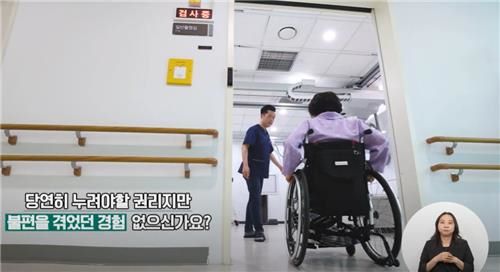
The health checkup center for the physically challenged (Image from the National Rehabilitation Center)
SEOUL, Jan. 1 (Korea Bizwire) –-In South Korea, earning a living through work is a crucial foundation for economic independence, yet a significant majority of disabled individuals report a lack of available jobs.
According to the ’2022 Life Panel Survey of Persons with Disabilities’ by the Korea Disabled People’s Development Institute (KODDI), released on December 31, 68.2% (157,654 out of 231,293) of registered disabled persons aged 19 and above stated they do not have access to income-generating employment.
The survey further revealed gender disparities in employment among disabled individuals. 62.2% of male and 75.8% of female disabled persons reported a lack of job opportunities, indicating that women with disabilities face more severe challenges in economic participation.
When examined by type of disability, individuals with mental disabilities reported the highest rate of unemployment at 90.3%, followed closely by those with brain and neurological disorders (89.5%) and internal/facial disabilities (78.1%). The rate for persons with physical disabilities was comparatively lower at 54.4%.
The situation appears more dire for persons with severe disabilities, with 82.3% reporting a lack of employment, compared to 60.6% among those with mild disabilities.
Among those with disabilities who are employed, the most common form of employment is as regular wage workers, constituting 31.7%. This is followed by temporary (25.3%) and day laborers (11.9%).
Self-employed individuals without employees represented 22.8%, while those with employees were at 3.1%. Additionally, 5.2% of respondents reported assisting in family businesses without receiving wages.
A notable gender difference was observed among self-employed disabled individuals: 26.8% of male disabled persons were self-employed without employees, compared to 14.8% of female disabled persons.
Moreover, 12.8% of female disabled individuals reported working in unpaid family businesses, a figure significantly higher than their male counterparts (1.4%).
In terms of specific disabilities, individuals with intellectual and autism spectrum disorders, as well as mental disabilities, were more likely to be temporary workers, at 48% and 42.8% respectively, compared to those with other types of disabilities.
Regarding the working hours of disabled wage earners, 67.5% were employed full-time and 32.5% part-time. Full-time employment was more common among male disabled persons (75.9%) than women (51.8%).
The survey also addressed the impact of disabilities on employment. A substantial 71.1% of respondents believed that their disability limited their job options, with 88.4% of those with mental disabilities agreeing with this statement.
Other reported impacts included limited working hours due to disability (62.5%), the need to take an average of one day off per week (59.8%), and the requirement for continual assistance or support while working (53.8%).
M. H. Lee (mhlee@koreabizwire.com)






